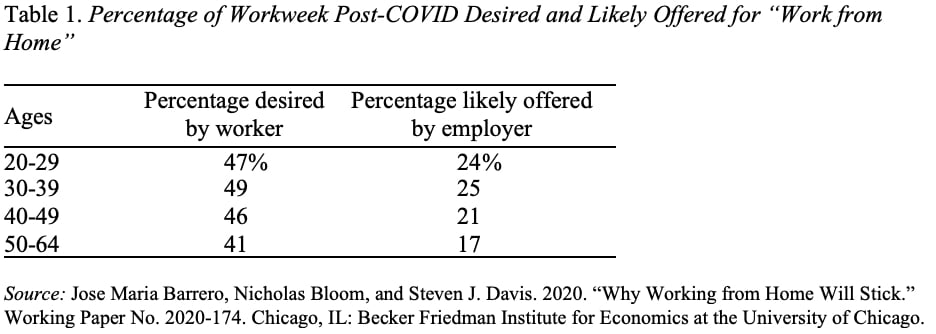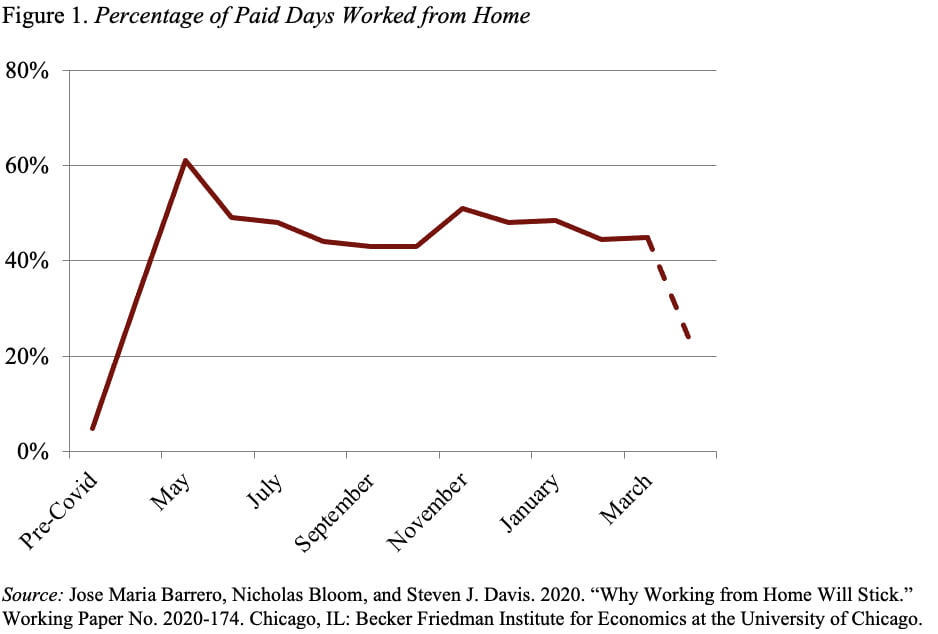
To What Extent Will Working from Home Continue?
Alicia H. Munnell is a columnist for MarketWatch and senior advisor of the Center for Retirement Research at Boston College.
Workers of all ages seem to like it.
A new working paper from the Becker Friedman Institute at the University of Chicago concludes – based on a series of surveys during 2020 and early 2021 – that working from home will play a significant role going forward. Older workers appear as eager as others to participate in work-at-home activity, but are slightly less optimistic about their employers’ receptiveness to the idea.
The authors surveyed 28,600 people over several waves between May 2020 and March 2021. The target was working-age (20-64) individuals who earned at least $20,000 in 2019 – that is, individuals with a strong attachment to the labor market. The survey included questions on earnings, education, age, and gender, and the raw responses were re-weighted to reflect the U.S. population as a whole. Respondents were asked about their working status during the pandemic, their views about working from home, and their sense of their employers’ plans after the pandemic.
The responses showed that in May 2020, 40 percent of those surveyed were working from home – more than those working on business premises or not working. As a percentage of paid workers, the May number was 61 percent. The comparable figure for the pre-COVID (2017-2018) period was estimated to be 5 percent.
As for going forward, survey participants were asked what percentage of the workweek they would like to work from home and what percentage of the workweek the employer was likely to offer. The respondents desired to work from home about 40 percent of the time – roughly two days, but thought the employer would offer them about 20 percent – roughly one day. The preferences of older workers look similar to those of their younger counterparts, as do their views on the flexibility of their employers (see Table 1).

Figure 1 pulls together the findings described. The share of paid days worked from home increased sharply from 5 percent pre-COVID to 60 percent during the initial shutdown, declining to 43 percent in October and projected to level off at roughly 20 percent – one day out of five – once COVID ends.

The authors offer five reasons why work-at-home activity is unlikely to return to its pre-COVID levels.
- Stigma reduced: working at home is no longer considered “shirking from home.”
- Experiment worked: pandemic forced firms to experiment – something firms could not have done on their own – and the results have been better than expected for both firms and workers.
- Investments made: average worker has invested 13 hours and $660 in infrastructure, and firms have invested in technology and equipment to facilitate working from home.
- Fear remains: many respondents want to avoid subways, crowded elevators, etc. even with a vaccine.
- Innovation spurred: pandemic has spurred a burst of innovation that will make working at home easier.
As someone who runs a center, these findings ring true. We can benefit from more flexibility than before but I’m not sure whether we need to be in three days or four days!







